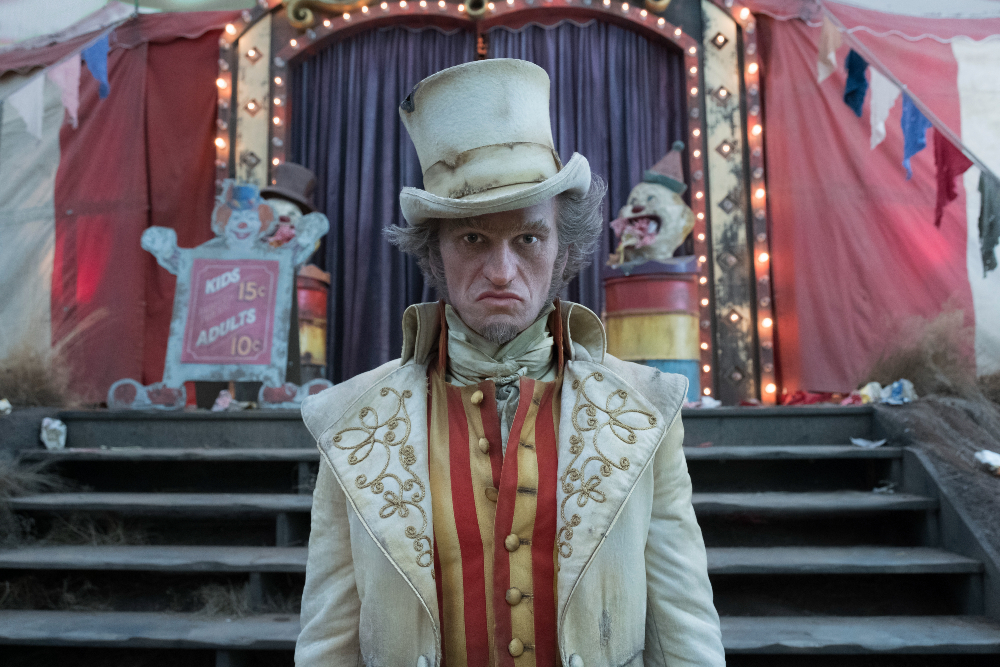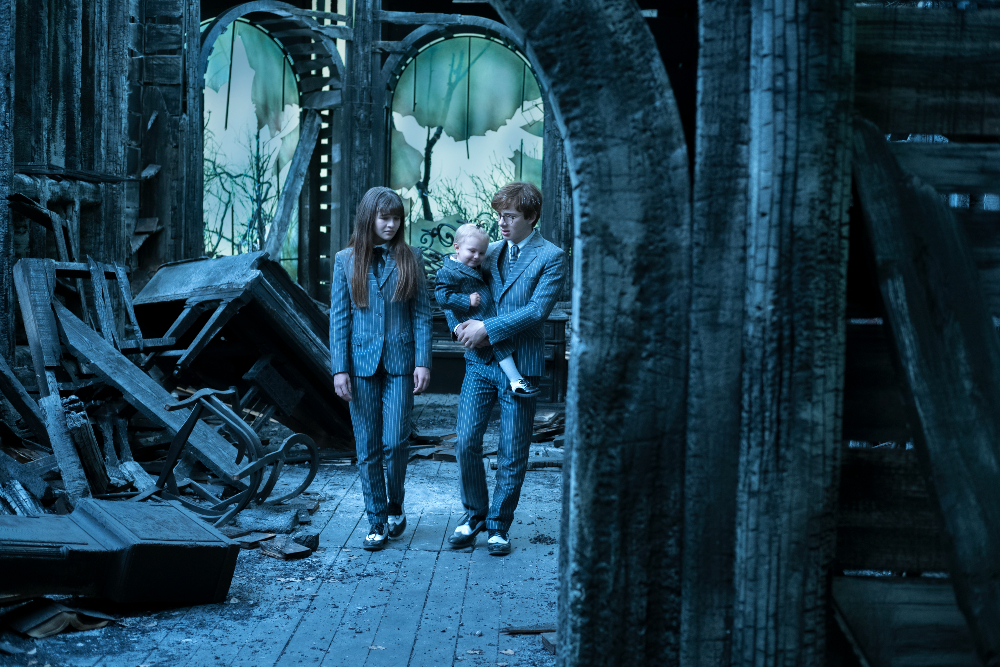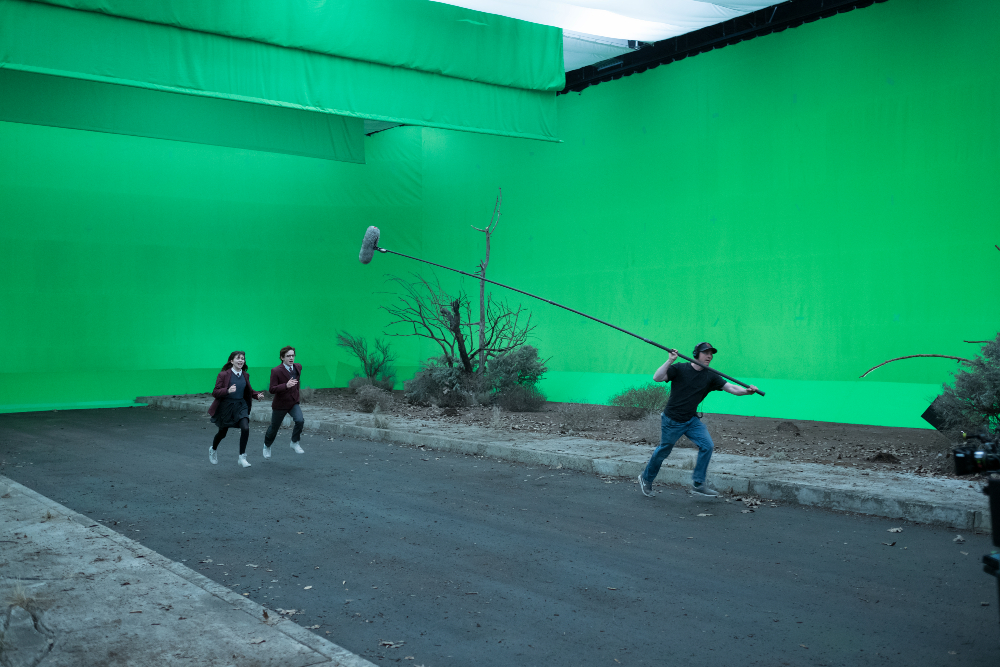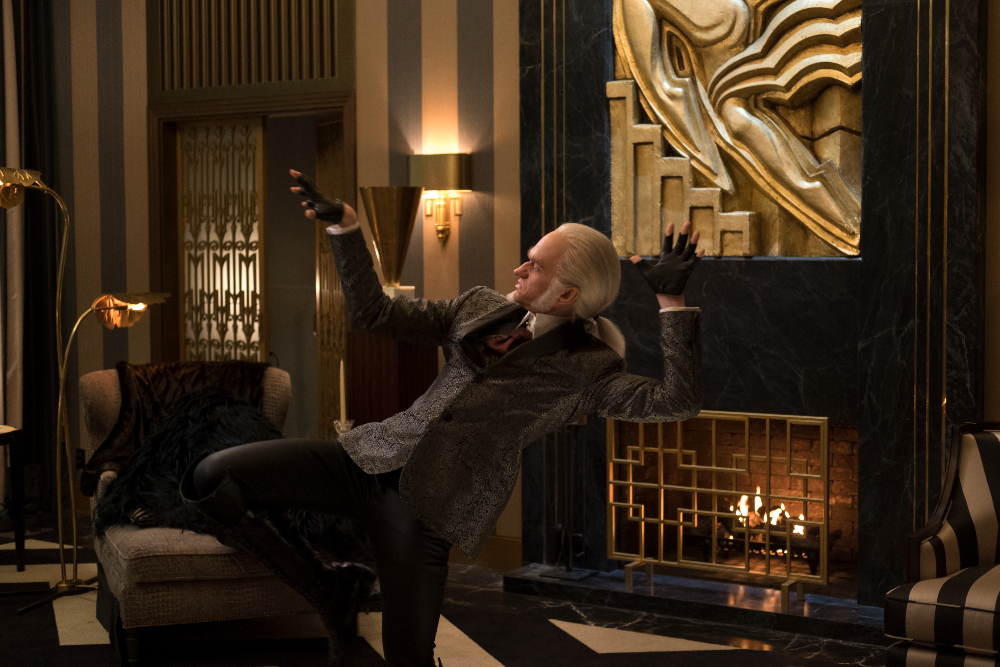
A Series of Unfortunate Events further impresses with the visual design in Season 2 by detracting the Baudelaire children away from family acquaintances into a vast world outside their comfort zone in five new diverse locales in the Austere Academy (aka: school), Ersatz Elevator (aka: Penthouse), Vile Village, Hostile Hospital, and the Carnivorous Carnival. Season 2 is an expanse of Season 1 with an opportunity to broaden the settings of the story. The multi-faceted splendid visual aesthetic of this show integrates the realistic production design with an additional layering of immersive visual effects and capped off by incredible High Dynamic Range coloring.
The five surroundings emulate actual physical locations; but in reality, production designer Bo Welch (Men in Black franchise) conceptualized these peculiar settings from the source material and as he drew, designed, and had his team build all the sets. Welch explained, “The school, what was at one time probably a highly regarded private boarding school modeled after an east coast or English boarding school and then we distressed it within an inch of its life. The Penthouse is all about people who are completely obsessed with style and fashion and what is in by staying ahead of the trends. The Vile Village is located in the Hinterlands which we decided would be flat and in the middle of nowhere consisting of a town hall, a bar, a crow fountain, gas station, feedstore, and a jail. The Heimlich Hospital which is half built, deserted, and horrifically depressing. The Carnivorous Carnival from a design standpoint includes tent clowns, scary material, partially abandoned, and run down.”

The visual effects are seamlessly integrated into the production design as it is an extension of the set. Visual Effects supervisor Eric Brevig (The Maze Runner) and visual effects producer Tom Horton (Emerald City) elaborate on the intertwined collaboration. “The art department here builds and sets the reality standard for what the buildings are supposed to look like. It’s our job to take their designs and continue it so that whenever the camera looks off of the set to the wide views or establishing shots, that the entire structures are seen. The buildings are built 20-24 feet high, everything else above that line is all visual effects. We are also adding Hinterland environments with beautiful sunset skies that extend to the background, to the horizon, and fill in the sky with clouds so that it all feels like one place,” expressed Brevig.
Horton added, “Every building is specifically designed with a stylized look, stylized world. We will often have a 10-page dialogue scene in an exterior town square in a 360-degree green screen. We added a roller coaster extension to the carnival set and the fountain valley with a CGI environment. In the Vile Village episodes, the rooftop is covered with 10,000 crows that are fully CG, plus those crows murmuring and landing in a tree total about 800 shots. We even open up Budapest as a potential location for some of the driving shots. All the driving shots were all CG. We’re tracking about 300 shots per episode. The show is not about the real world, it really just has this look to it.”

As the visual effects amplifies the production design, the final stages to enrich the visual fullness is topped off within the coloring process from colorist Laura Jans Fazio (Hawaii Five-0). “Every time we moved into a different place in the story line, it really came alive by the set design and then me adding the color into it and making it this soft beautiful palette of color that enhances everything in wardrobe and set design. The palette is a softer contrast, more filmic, more painterly, like a hand painted black and white photograph from back in the day; and a very sort of pastel with a blue veil across it. It’s a subtle approach to telling the story and utilizing the colors that are designed for it,” the colorist decorated.
The entire Season 2 is very stylized and realistic, but episode 210 is the one that is accentuated. Episode 210 known as “The Carnivorous Carnival: Part Two” is a carnival set built to the edge of a giant green screen stage. This episode displays the elaborate constructed production design with incredible exterior night skies that maintains a special palette of beautiful colors.
A Series of Unfortunate Events: Season 2 parades a rich hyperrealism design that is visually conspicuous from the unprecedented craft of production design to the capturing visual effects tapered with a painterly image through the wide scope of color dynamics as these components uniformly create a unique and specific look.
All photos courtesy of Netflix.






